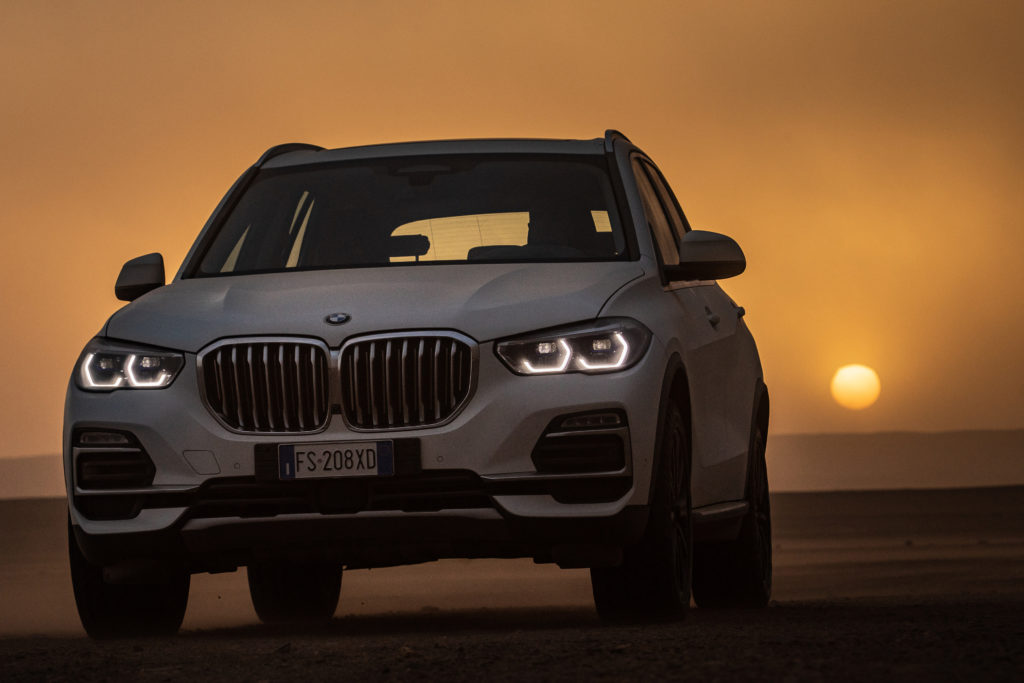Last month, I wrote a column in which I complained about the proliferation of SUVs within the automotive landscape. Why, I wondered aloud, would anyone want to lug thousands of pounds of extra sheet metal and other materials around each and every day, when such extra capacity is only used during a handful of occasions? Why give up many automotive qualities that we once held dear for capabilities and other traits whose benefits are so seldom realized?
These questions are rhetorical of course, because there are those among us who do make genuine, honest use of vehicles that have actual suspension travel and articulation, or three rows of seats, for example. Bearing in mind just how new the automobile is in the grand scheme of things though, perhaps the staunch holdouts among us who can’t stand the thought of BMW and others making SUVs and the like are a bit shortsighted, or, at the very least, viewing the past through rose-tinted glasses.
It wasn’t so long ago—three to five family generations for many—that infrastructure in the form of paved roads and interstates that stretch like bands across the landscape didn’t exist. The automobiles of the era had to contend with what were essentially wagon trails, with deep ruts dug further into the earth by the narrow tires of each passing traveler. These roads, if you could call them that, would become unusable on a seasonable basis, and were a far cry from the cobblestone thoroughfares of Europe.
Thankfully the era of actually having to lubricate your chassis and physically light your headlamps is behind us. Today, we enjoy multi-lane freeways that stretch for a nearly unfathomable distance, and paved streets that can get us exactly where we need to go. There’s just one problem, they’re all either falling apart, congested, or both, thanks to decades deferred and often cut-rate maintenance.
Sure, some places have better roads than others, but I’ve often found myself able to experience both ends of the spectrum within a few miles of each other in many cities. Crumbling pavement, potholes, gridlock traffic, poorly engineered traffic flow, untrained drivers, and worn out vehicles are just a few of the issues one must contend with during a commute in many major American cities, and if you do it all long enough, you might start to question the low-profile tires, track-ready suspension, low seating position, and other characteristics that define a performance car.
A number of years ago, before seemingly every automaker doubled down on their SUV efforts, one of my previous stick-shift, German-made, and performance-oriented vehicles found itself in need of a new engine. The heart transplant ended up dragging on, and over a period of several months, I was commuting to and from work in a series of loaner cars, all by the same make. After I exhausted the conventional range of entry-level sedans, I moved on to the entry-level and mid-size crossover and SUV models.
The experience was an eye opener, and it changed me forever. I quickly adapted to the higher seating position and different handling characteristics, and before long, really enjoyed having a modern, upscale SUV at my disposal. Potholes, expansion joints, driveways and other road imperfections I previously agonized over, lest I end up with a bent wheel, were gone from my conscience. Speed bumps, curbs, and parking stops no longer represented potential danger, although the speed these crossovers could achieve was another story.
Fuel economy suffered as well, but considering the German quad-cam V8 awaiting replacement at the dealer, this wasn’t a factor. On the other hand, the added passenger room and storage capacity were two things I really began to appreciate. Accommodating one or multiple sets of golf clubs no longer required an exercise in precision and arrangement, while trips to the grocery store or hauling other consumer goods back to the homestead proved effortless with such space.
The driving characteristics themselves even began to grow on me. Power not being an issue, handling and braking were impressive in challenging, dynamic circumstances, although I didn’t want to think about the cost of tires. I suppose the image and stigma associated with driving one of these models also bears mentioning, but after discovering the ease of getting in and out, even in tight parking spaces, I simply wasn’t concerned. I was driving a vehicle that had seemingly everything I needed on a daily basis, and then some.
And that leads us to the current state of things. Give enough people this experience, and they will default to the higher seating position of an SUV. Getting back in my Audi S4 (oops, I said it), shifting the six-speed manual, exercising the V8, and nailing the apex on a junction ramp did their best to reset my thinking, but several years—and cars, most of them BMWs—down the road, and I still can’t ignore the possibility of someday owning another premium, luxury, whatever, crossover or SUV with good power, respectable handling, and the premium sound system. The phrase point and shoot might not immediately apply here, but that’s how driving one of these vehicles felt. I pointed it where I wanted to go, and off I want. I didn’t care about things like pavement condition, or whether I’d be able to experience the rev range at some time during my drive—I just drove, and accomplished what I needed, and it wasn’t boring or soul-sucking like piloting a modern econobox can be.
Come to think of it, it all seems to relate back where this article began. It wasn’t so long ago road conditions necessitated automobiles with a bit more capability than what the market was providing, and today, if you were to design a single vehicle to do it all, it would probably look a lot like a BMW X3 or X5. Now that we’ve addressed the practical existence of SUVs, next we’ll have to tackle the question of why every single automaker feels the need to make one.—Alex Tock
[Photos courtesy BMW AG.]
